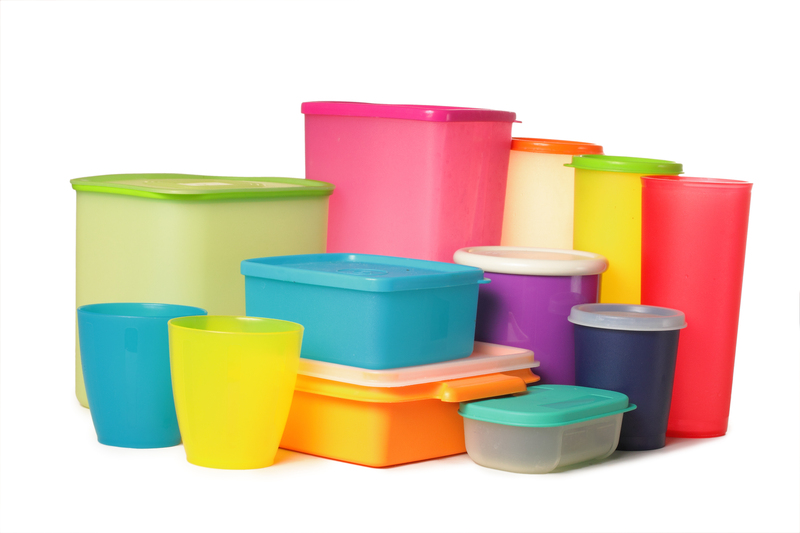The Future of Packaging and Cardboard Waste Management
Posted on 21/05/2025
The Future of Packaging and Cardboard Waste Management
As e-commerce and global consumption rise exponentially, the conversation around packaging waste, especially cardboard waste management, has never been more crucial. Cardboard, once lauded for being easily recyclable, now presents complex environmental challenges. In this in-depth exploration, we will dissect the current state of cardboard packaging, analyze upcoming trends, and highlight innovative solutions shaping the future of packaging and cardboard waste management.

Understanding the Cardboard Packaging Boom
Cardboard, particularly corrugated fiberboard, has emerged as the backbone of modern packaging due to its light weight, durability, and recyclability. With more businesses embracing online channels and prioritizing speedy shipping, the demand for cardboard packaging has exponentially increased.
- Global cardboard packaging consumption topped 250 million tons in 2023.
- Cardboard accounts for more than 40% of all packaging waste generated worldwide.
- E-commerce purchases typically use 20-30% more cardboard than brick-and-mortar retail.
However, as the use of cardboard packaging soars, so do the challenges associated with collecting, reusing, and recycling cardboard waste. Without a robust cardboard waste management system, the environmental burden could become unsustainable.
Key Challenges in Modern Cardboard Waste Management
- Contamination: Cardboard contaminated with food, liquids, or non-paper materials (like plastic layers or tapes) reduces recyclability.
- Overpackaging: Excessive use of cardboard for relatively small items leads to unnecessary waste.
- Recycling Infrastructure Gaps: Not all regions have the recycling facilities or processes to handle surging cardboard waste efficiently.
- Consumer Awareness: Many people are still unaware of best practices in sorting and managing cardboard waste.
The above challenges set the stage for exploring emerging trends and innovations that will define the future of cardboard packaging and waste management.
Emerging Trends Shaping the Future of Packaging
1. Growth of Sustainable Packaging Materials
While cardboard will remain prevalent, the industry is rapidly innovating towards even more sustainable solutions:
- Biodegradable Coatings: Using water-based or plant-based coatings instead of plastic lamination makes cardboard easier to recycle and compost.
- Alternative Fibers: Incorporating agricultural byproducts like straw, bamboo, and sugarcane pulp reduces reliance on virgin timber.
- Smart Packaging: Integrating sensors and digital markers on packaging caters to evolving supply chain needs without compromising recyclability.
*These advancements are designed to lower the environmental impact of packaging while maintaining performance and protection standards.*
2. Designing for Circularity
The concept of a circular economy is transforming how businesses approach packaging design. Rather than treating packaging as a "single-use" item, brands are developing packaging that is reusable, returnable, or easily recyclable.
- Some companies experiment with modular packaging that users can disassemble and reuse at home.
- Cardboard designs are being optimized to use less material without sacrificing structural strength.
- New return schemes and collection points encourage consumers to send used packaging back for reuse or recycling.
3. Advanced Cardboard Waste Sorting and Recycling Technologies
Robotics, AI, and machine learning are revolutionizing recycling plants:
- Automated sorting lines identify and separate contaminated or mixed-material cardboard with high precision.
- Optical sensors and AI-enabled cameras ensure only clean, recyclable cardboard enters the recycling stream.
- Innovations in pulping technology extract more fiber from used cardboard, increasing recycled material yield.
These advancements make large-scale cardboard waste management far more efficient and less labor-intensive.
Best Practices for Sustainable Cardboard Waste Management
Whether you're a business, a consumer, or a local government, everyone has a role in shaping the future of packaging and cardboard waste management. Some recommended strategies include:
For Businesses:
- Right-size packaging: Use only the amount of cardboard necessary to protect goods during shipping.
- Promote recyclability: Choose simple, single-material packaging and avoid unnecessary coatings or mixed materials.
- Take-back programs: Offer convenient ways for consumers to return used packaging for reuse or recycling.
For Consumers:
- Flatten and clean boxes: Remove plastic tapes, labels, and residue before recycling cardboard items.
- Support responsible brands: Prefer companies that invest in sustainable packaging and provide clear recycling instructions.
- Reuse creatively: Repurpose cardboard for household needs, crafts, or gardening.
For Local Governments and Municipalities:
- Enhance curbside recycling: Ensure regular, reliable pickup of cardboard waste from residential and commercial areas.
- Public awareness campaigns: Educate communities on cardboard recycling best practices and why they matter.
- Invest in technology: Upgrade sorting facilities to incorporate AI and robotics for cleaner, more efficient recycling streams.
Innovative Solutions Paving the Way for the Future
Several pioneering projects and organizations are setting benchmarks in the realm of packaging and cardboard waste management:
Reusable Packaging Networks
Start-ups and large brands are collaborating to create networks where packaging can be used multiple times before recycling. For instance, some grocery chains now offer products in returnable cardboard crates that customers bring back for deposit refunds.
Compostable Cardboard
Technological breakthroughs allow certain grades of cardboard to fully biodegrade in backyard compost bins, moving beyond recycling into direct nutrient reclamation.
Blockchain-based Recycling Incentives
Digital platforms record recycling data and issue tokens or rewards to participants, fostering community-driven cardboard waste management initiatives and transparency in recycling rates.
The Economic and Environmental Benefits of Improved Cardboard Waste Management
More efficient cardboard waste management brings both economic gains and significant reductions in environmental impact:
- Reduced raw material costs: Recycled fibers are less expensive and require less energy to process than virgin paper pulp.
- Lower landfill usage: Effective recycling and composting prevent millions of tons of cardboard from occupying landfill space.
- Decreased greenhouse gas emissions: Proper cardboard waste management curbs methane emissions, conserves energy, and preserves forests.
- Creation of green jobs: Expanding the recycling sector fuels employment opportunities in logistics, processing, and technology development.
Regulatory Changes and the Push Toward Zero-Waste Packaging
Governments worldwide are implementing stricter packaging standards and extended producer responsibility (EPR) schemes. These regulations hold businesses accountable for the end-of-life management of their packaging materials and incentivize the use of recyclable, biodegradable, or compostable options.
The EU and several US states are establishing "zero-waste" goals, aiming for near-total recycling or reuse of retail and industrial packaging, a move that will require unprecedented collaboration across industries and authorities.
The Role of Consumers in Shaping the Future of Cardboard Packaging
Consumer expectations are evolving alongside environmental consciousness. Individuals are demanding eco-friendly packing solutions, reduced overpackaging, and clear recycling instructions. Brands that align their packaging with these values stand to gain loyalty and marketplace differentiation.
Moreover, the rise of social media scrutiny forces companies to account for their packaging decisions, creating a feedback loop that accelerates the shift towards sustainability.

Predictions for 2030 and Beyond
By 2030, the landscape of packaging and cardboard waste management will be transformed by the following trends:
- Smart packaging proliferation: Shipping boxes embedded with digital tracking, optimizing logistics and reducing waste.
- Material innovation: Cardboard blends incorporating upcycled agricultural waste, algae, or even mycelium for supreme sustainability.
- Automated, local recycling: Miniature neighborhood recycling hubs equipped with AI-run sorters, reducing the need for long transportation hauls.
- Near-perfect recycling rates: Thanks to policy, consumer engagement, and technology, cardboard recycling could surpass 95% efficiency in developed regions.
- Circular marketplaces: Businesses buying and selling second-life packaging, encouraging industrial symbiosis and reducing virgin resource demand.
Conclusion: Building a Sustainable Packaging Future
The future of packaging and cardboard waste management is not merely a technological challenge--it is a shared opportunity. Innovative materials, policy reforms, consumer engagement, and advanced recycling technologies will together shape a world where packaging's life cycle supports both economic progress and environmental stewardship.
By supporting eco-friendly packaging solutions and responsible waste management practices, businesses and individuals can help usher in a new era--one where cardboard's recyclability is not just a promise, but a fully realized reality.
The journey towards sustainable packaging and robust cardboard waste management has begun. The actions we take today will reverberate for decades, defining how future generations interact with the material world around them.

